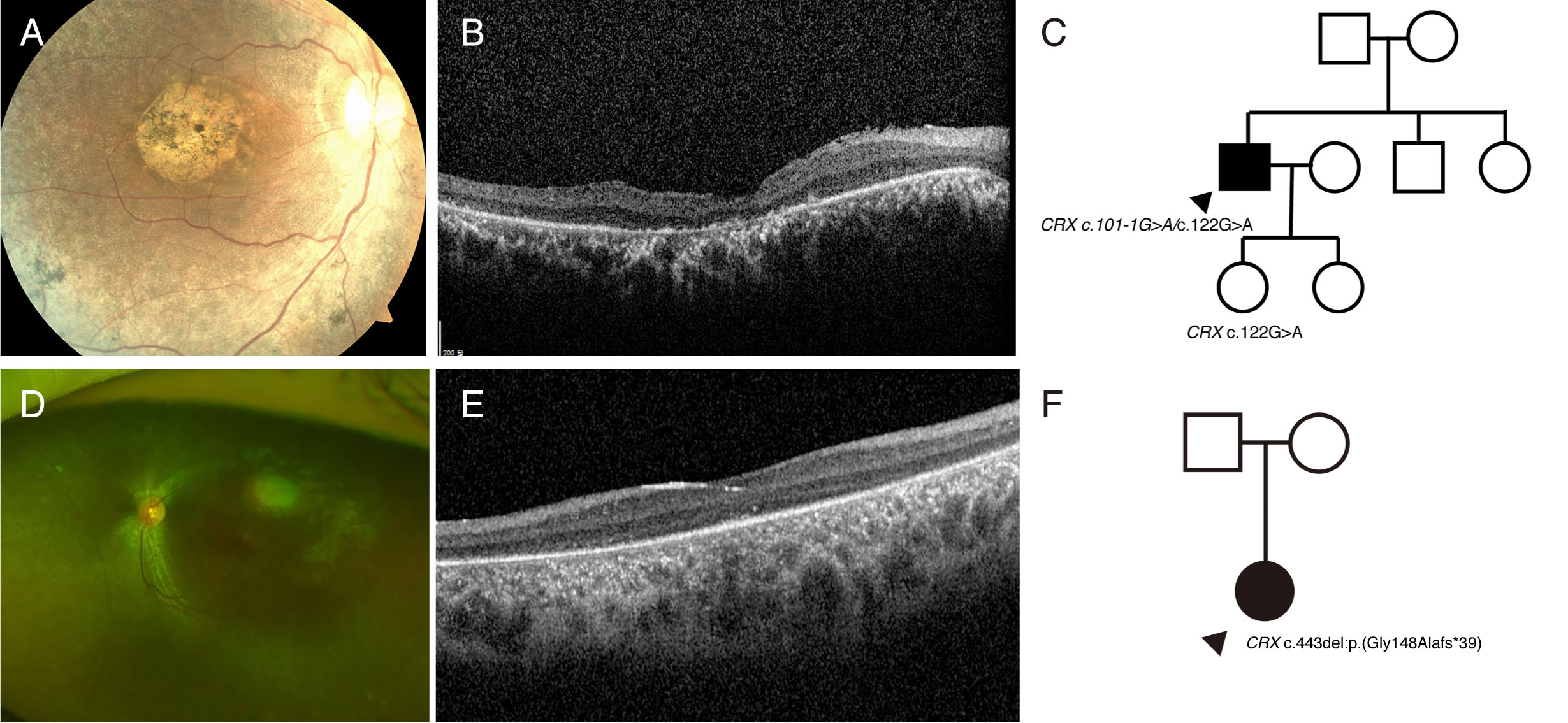Figure 4. Mutations in CRX cause Leber congenital amaurosis (LCA) as either an autosomal recessive or autosomal dominant trait (P11). A: Fundus photograph showing macular dystrophy with peripheral retinal pigmentary changes. B: Optical coherence tomography showing diffuse loss of photoreceptor bands and thinning of the outer nuclear layer. C: The daughter of the proband (age 12 years) carrying the mutation in CRX c.122G>A had no evidence of retinal degeneration, suggesting that CRX can be inherited in an autosomal recessive manner. Although it has been reported that CRX c.122G>A variants cause cone-rod dystrophy in an autosomal dominant manner, the daughter of the proband showed no evidence
of cone-rod dystrophy until the age of 12 years. D: Fundus photographs showing diffuse peripheral retinal pigmentary changes at early infancy (P12). E: Optical coherence tomography showing diffuse loss of photoreceptor bands and thinning of the outer nuclear layer. F: The heterozygous mutation in CRX c.443delG causes Leber congenital amaurosis (LCA), suggesting this novel mutation in CRX is inherited in an autosomal dominant manner.

 Figure 4 of
Surl, Mol Vis 2020; 26:26-35.
Figure 4 of
Surl, Mol Vis 2020; 26:26-35.  Figure 4 of
Surl, Mol Vis 2020; 26:26-35.
Figure 4 of
Surl, Mol Vis 2020; 26:26-35. 